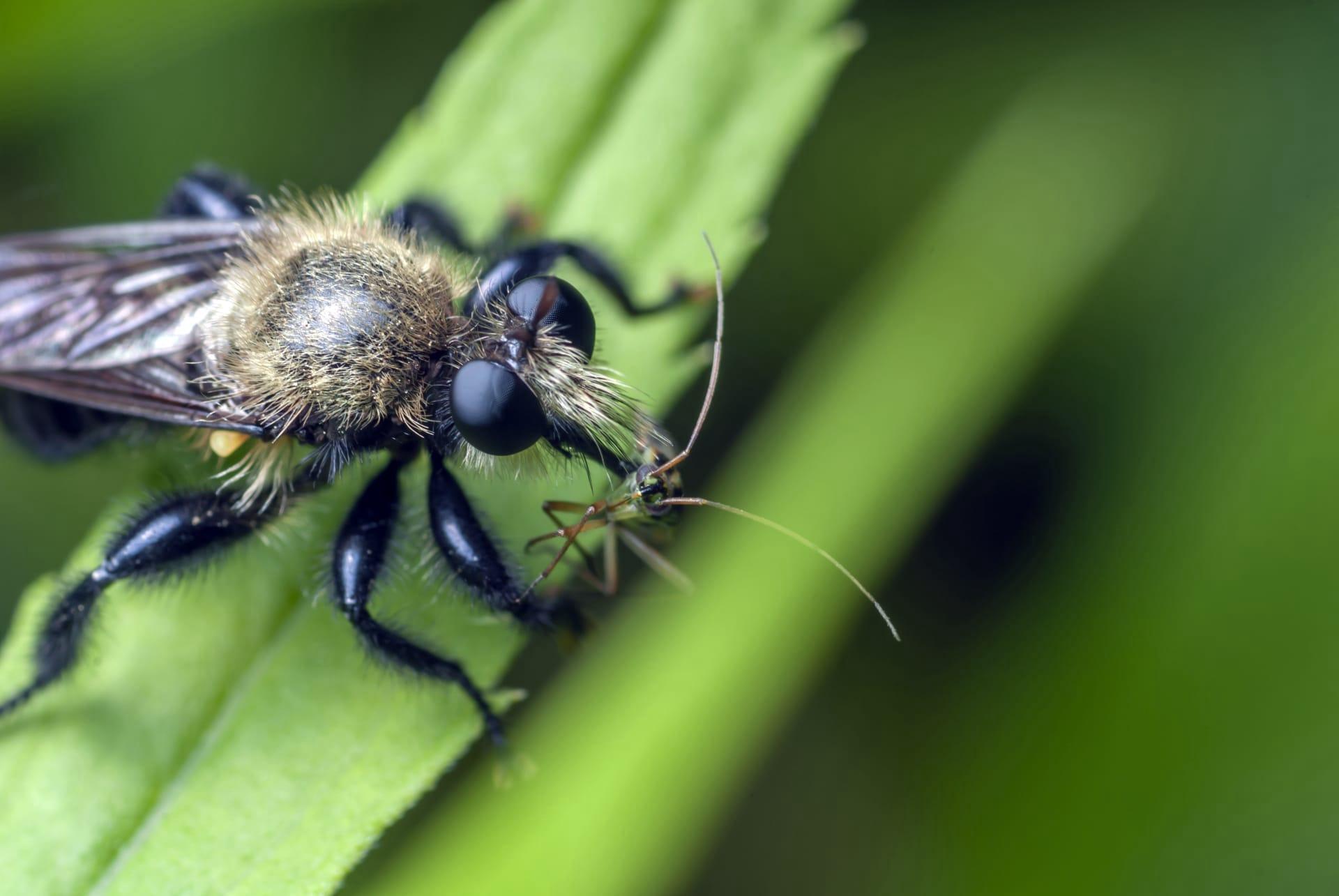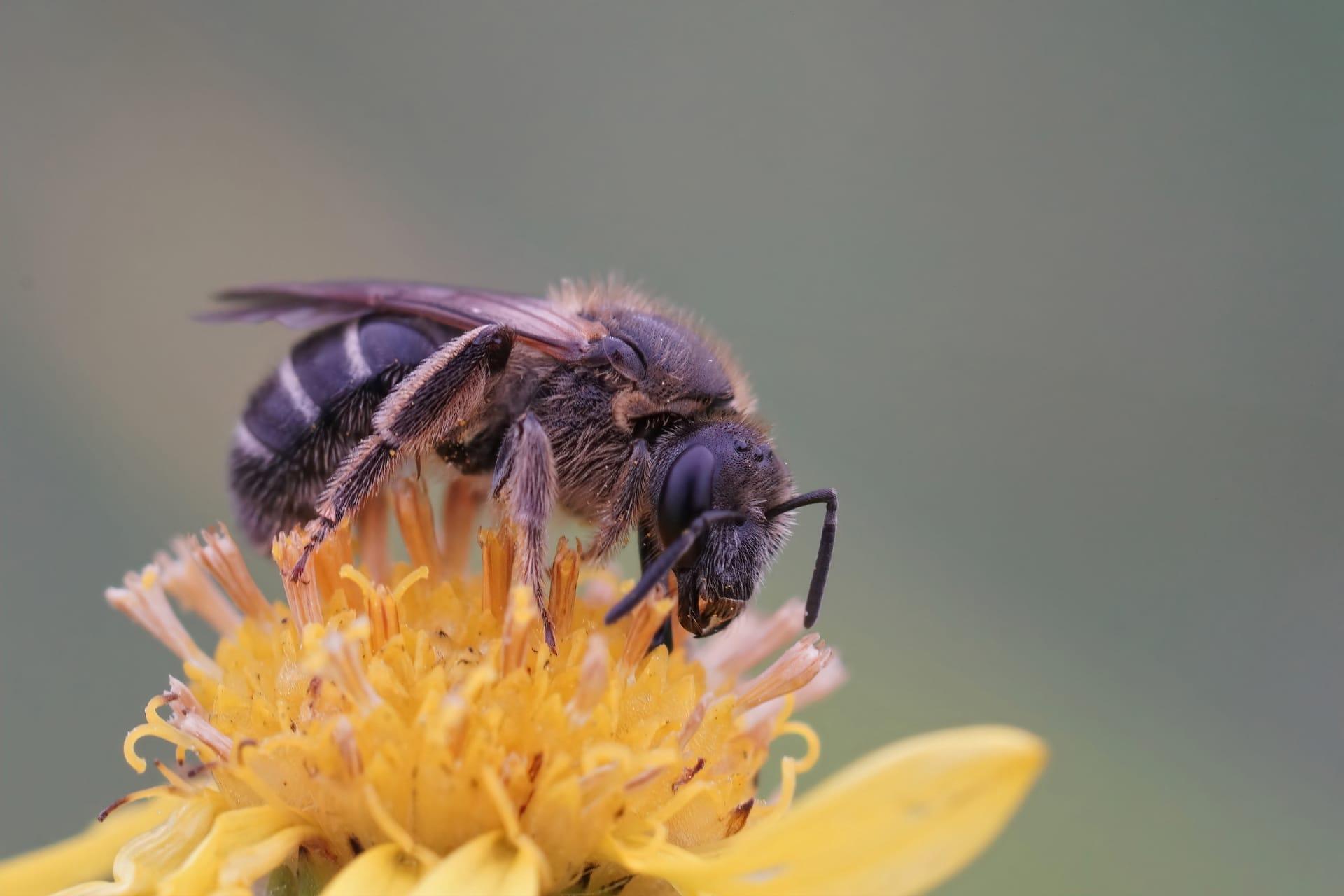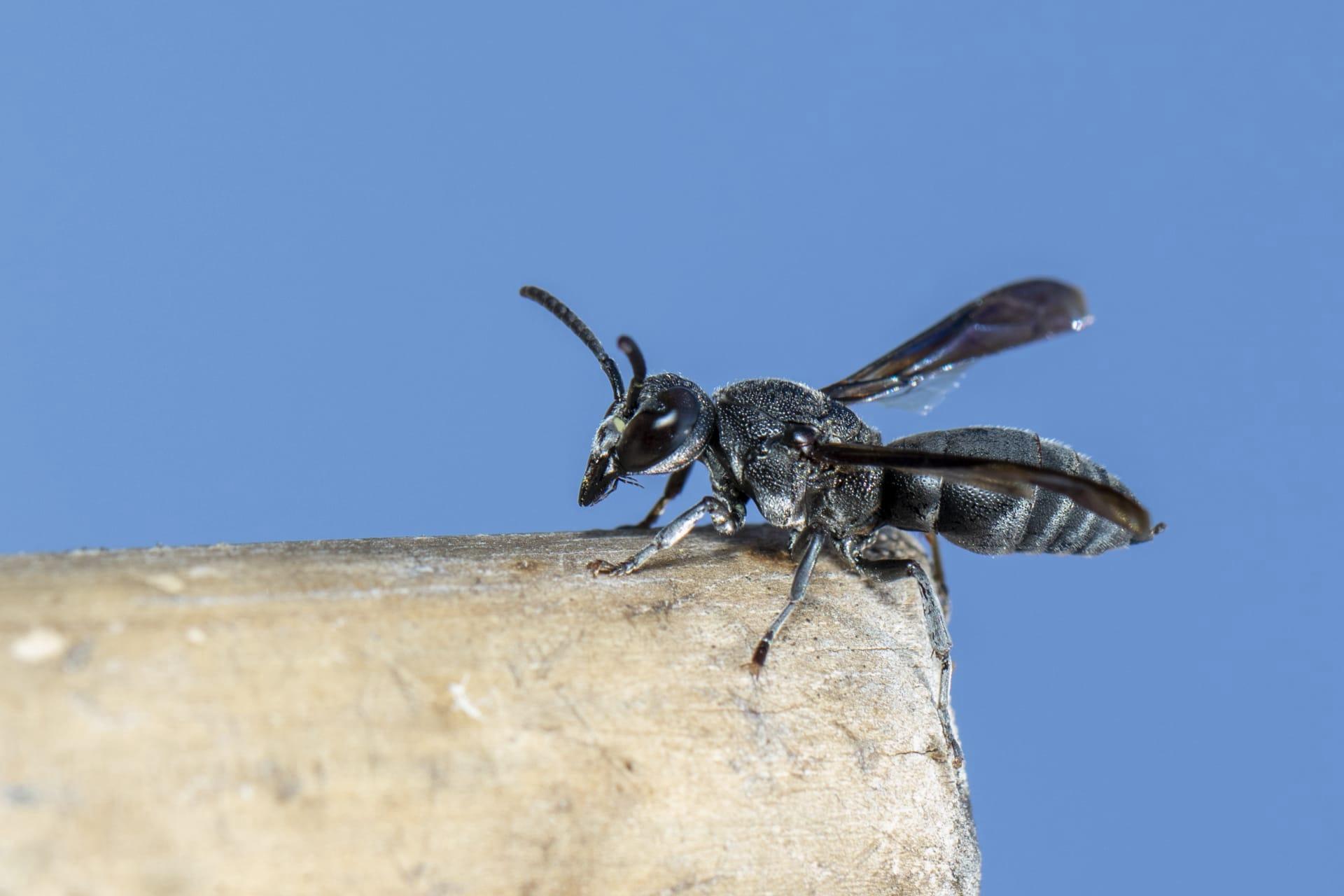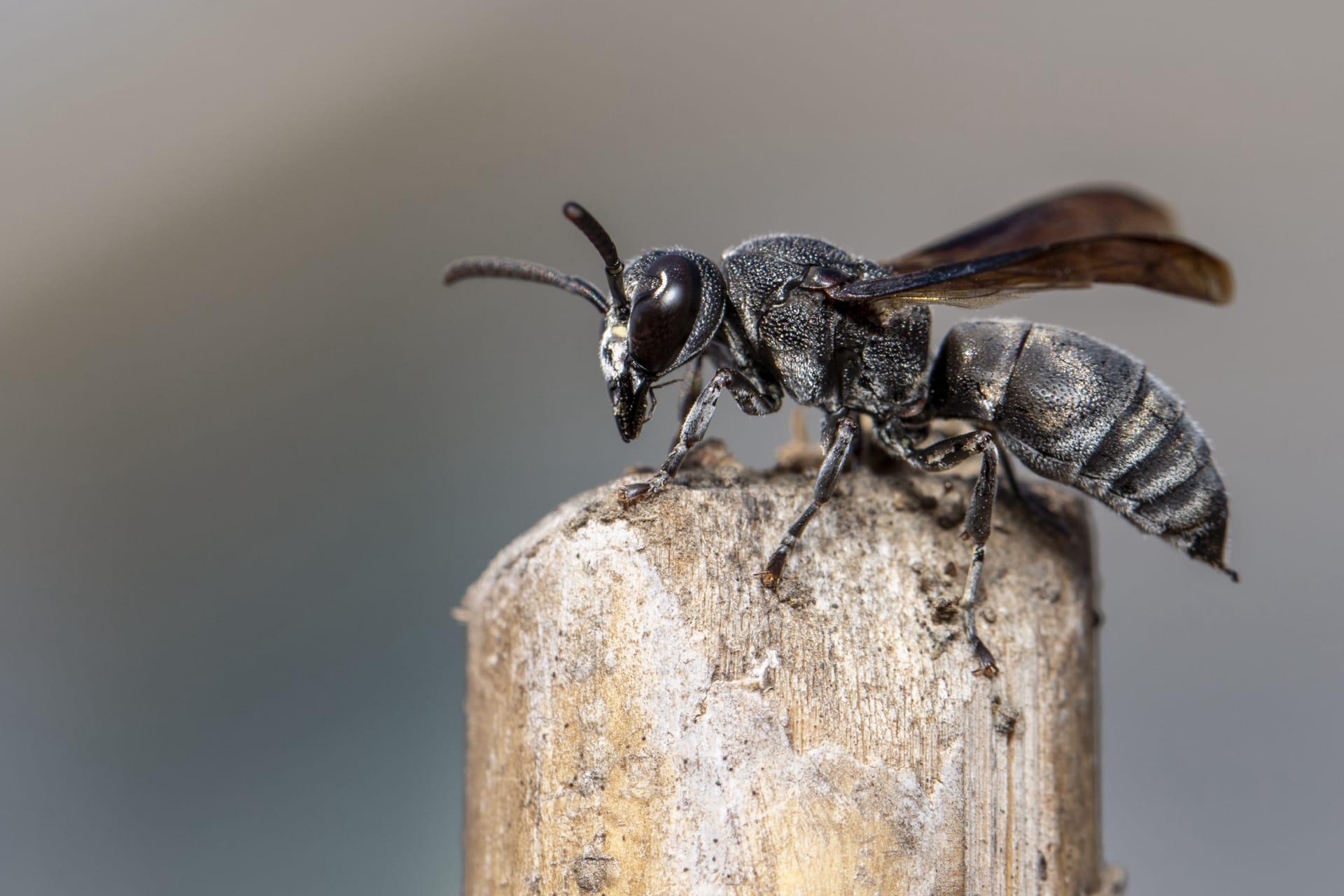1
Did you know that the Great Black Wasp, scientifically known as Sphex pensylvanicus, is a master of architecture? These solitary wasps dig complex underground burrows to nest their offspring. Each burrow can be up to 6 inches deep, showcasing a remarkable feat of insect engineering. They meticulously create separate chambers for each egg, demonstrating a level of care and precision that rivals some of the best architects in nature.
Another fascinating fact about the Great Black Wasp is its role in pollination. Despite their fierce appearance, these wasps are peaceful pollinators, playing a crucial role in the ecosystem. Their long legs dangle in flight, giving them a unique appearance as they move from flower to flower. With a body length of about 1 to 1.5 inches, they are among the larger wasp species, making their presence in gardens both noticeable and beneficial for plant life.

2
The Great Black Wasp's diet is a tale of two phases. As adults, they are vegetarians, sipping nectar from flowers. This gentle diet contrasts sharply with their larval stage, where they are voracious carnivores. Adult wasps hunt for katydids, crickets, and grasshoppers to feed their larvae. They paralyze these insects with their sting and carry them to the nest, providing a fresh meal for their developing offspring.
Remarkably, the Great Black Wasp exhibits an exceptional memory in relation to their nesting sites. After hunting, they can navigate back to their specific nest, a challenging task given the uniformity of the landscape. This impressive spatial memory highlights their advanced cognitive abilities, enabling them to thrive in diverse environments.

3
Communication among Great Black Wasps is a subtle yet intricate affair. They use pheromones, chemical signals, to communicate with each other, especially during mating seasons. These pheromones are like invisible messages, guiding wasps to potential mates or alerting others to dangers. This chemical language is essential for their survival and reproductive success.
In terms of life cycle, the Great Black Wasp's journey is quite remarkable. They have a one-year life cycle, with adults emerging in late spring or early summer. After mating, females spend the rest of their lives building nests and provisioning them with food for their future larvae. This cycle of birth, growth, and renewal each year mirrors the rhythms of nature, showcasing the wasp's integral role in its ecosystem.

4
The hunting strategy of the Great Black Wasp is both effective and brutal. They are skilled hunters, using their speed and powerful sting to overpower prey much larger than themselves. This ability to tackle large insects is crucial for their survival, ensuring that their larvae have enough food to develop. It's a raw display of nature's balance between predator and prey.
Another interesting aspect is their contribution to controlling pest populations. By preying on insects like grasshoppers and crickets, which are often considered agricultural pests, Great Black Wasps inadvertently aid in pest control. This natural method of pest regulation highlights the interconnectedness of species and the importance of each organism in maintaining ecological balance.

5
The coloration of the Great Black Wasp is not just for show; it serves as a warning signal to predators. Their striking black body with blueish wings creates a visual deterrent, signaling potential threats about their powerful sting. This form of aposematic coloration is a common strategy in the animal kingdom, used by many species to avoid conflict.
The Great Black Wasp's wings are a marvel of nature's engineering. They have a unique smoky black color and can span up to twice the length of their body. These wings are not only beautiful but highly functional, providing them with excellent maneuverability and speed. This allows them to swiftly navigate through their environment, whether they are hunting for prey or evading predators.